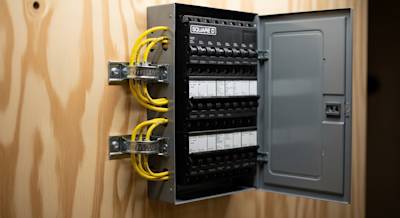Twist Lock Plug
Welcome to a comprehensive guide on twist lock receptacles brought to you by Sagan Electric, your trusted residential electrical contractor in Sacramento. In this article, we will explore the concept of twist lock plugs, their design, advantages, common applications, installation considerations, and maintenance tips to ensure electrical safety and reliability in your settings.
Understanding the Basics of a Twist Lock Receptacle
A twist lock receptacle is a specialized electrical outlet designed for secure and reliable connections. Unlike standard electrical outlets, these receptacles feature a unique locking mechanism that ensures a firm connection between the plug and the receptacle. This design prevents accidental disconnections, making them essential in various applications where safety and reliability are paramount.
Twist lock receptacles differ from conventional outlets primarily in their locking mechanism. While standard outlets rely on friction to hold plugs in place, twist lock receptacles require a clockwise twist to securely lock the plug into position.
The Design and Mechanism of Twist Lock Receptacles
The design of a twist lock plug includes several key features. These receptacles typically have prongs or blades that align with corresponding slots in the plug. To establish a connection, the plug is inserted into the receptacle and then rotated clockwise to engage the locking mechanism. This twist creates a secure and stable electrical connection.
The locking mechanism inside the receptacle ensures that the plug remains firmly attached, even in high-vibration environments or where secure connections are crucial for safety and functionality.
Types of Twist Lock Receptacles
There are various types of twist lock receptacles, each designed for specific applications and amperage ratings. Common types include 15-amp, 20-amp, and 30-amp receptacles, each with distinct configurations to prevent incompatible devices from being connected.
Understanding the differences between these plug is essential to select the appropriate one for your needs. For instance, a 30-amp receptacle is typically used for high-power equipment, while a 15-amp receptacle is suitable for smaller appliances and devices.
Advantages of Using Twist Lock Receptacles
Twist lock receptacles offer several advantages, making them a preferred choice in various settings:
- Safety Features: The locking mechanism reduces the risk of accidental disconnections, enhancing safety in environments where electrical connections are critical.
- Reliability: These receptacles are known for their reliability, especially in high-vibration or demanding industrial settings.
- Preventing Overloading: Different amperage ratings help prevent overloading circuits, ensuring that only compatible devices are connected.
Common Applications of Twist Lock Plugs
Twist lock receptacles find extensive use in various industrial and commercial settings, including:
- Construction Sites: They are commonly used to power heavy machinery and tools, providing a secure electrical connection in dynamic construction environments.
- Manufacturing Facilities: Twist lock receptacles ensure the reliable operation of manufacturing equipment, reducing the risk of downtime and production delays.
- Outdoor Events: These receptacles are often used for outdoor events and festivals to power lighting, sound systems, and food vendor equipment.
Installation Considerations for Twist Lock Receptacles
While installation of twist lock receptacles may seem straightforward, it is essential to follow basic guidelines and consider safety precautions. Professional installation by an expert electrical contractor like Sagan Electric is recommended, as it ensures compliance with local electrical codes and standards.
Professional installation guarantees that the receptacles are correctly wired, grounded, and rated for their intended use, reducing the risk of electrical hazards.
Maintenance and Safety Tips
Regular maintenance of twist lock receptacles is crucial to ensure their continued reliability and safety. Here are some maintenance and safety tips to follow:
- Routine Checks: Periodically inspect receptacles for signs of wear, damage, or loose connections. Replace any damaged receptacles immediately.
- Keep Clean: Ensure that receptacles are kept clean and free from dirt, dust, and debris, which can interfere with the locking mechanism.
- Safety Precautions: Always disconnect the power supply before attempting any maintenance or plug removal to avoid electrical shock.
Choosing the Right Twist Lock Receptacle for Your Needs
When selecting a twist lock plugs, consider the following factors:
- Amperage Rating: Choose a receptacle with the appropriate amperage rating for the devices and equipment you plan to connect.
- Configuration: Ensure that the receptacle's configuration matches the plug of the equipment you intend to use.
- Professional Consultation: When in doubt, consult with an expert electrical contractor like Sagan Electric to make informed choices that meet your specific needs.
Contact Sagan Electric Today For a FREE Outlet Installation Quote!
In conclusion, twist lock receptacles play a vital role in ensuring electrical safety and reliability in various industrial and commercial settings. Their unique locking mechanism, amperage ratings, and design features make them indispensable for secure electrical connections.
As your reliable residential electrical contractor in Sacramento, Sagan Electric emphasizes the importance of proper installation, regular maintenance, and adherence to safety precautions when using twist lock receptacles.
For all your outlet installation needs and expert electrical contractor services, trust Sagan Electric. Contact us today to ensure that your electrical connections are safe, reliable, and tailored to your specific requirements.
Tags: Twist Lock Plug, Twist Lock Receptacle,








